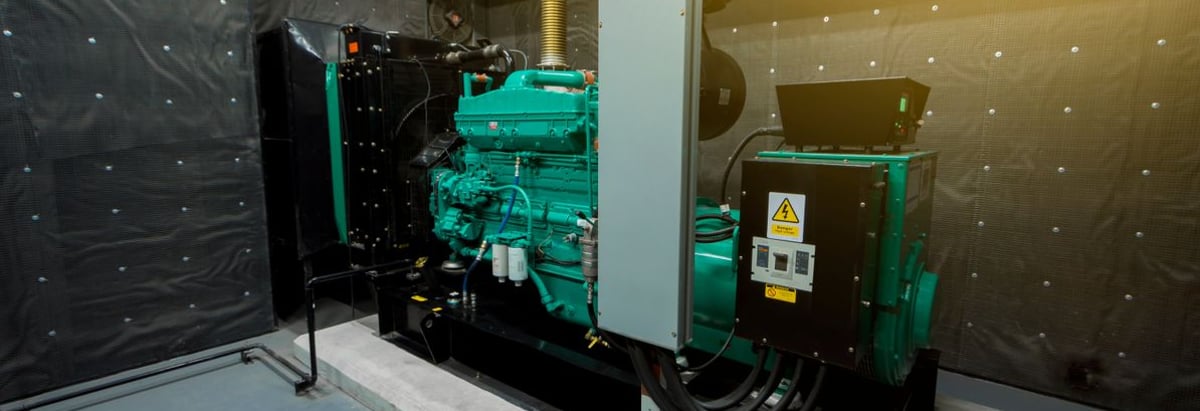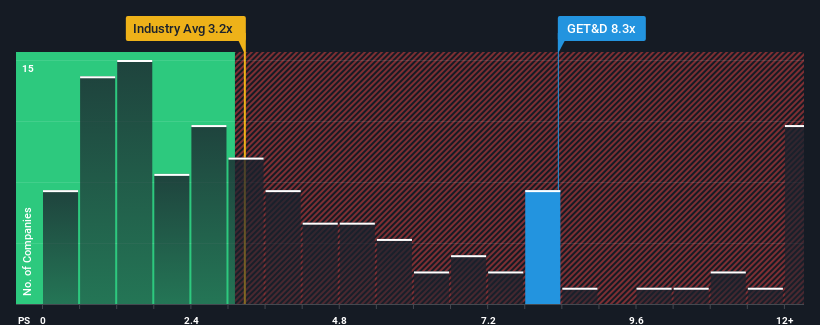- India
- /
- Electrical
- /
- NSEI:GVT&D
Why Investors Shouldn't Be Surprised By GE T&D India Limited's (NSE:GET&D) P/S

GE T&D India Limited's (NSE:GET&D) price-to-sales (or "P/S") ratio of 8.3x may look like a poor investment opportunity when you consider close to half the companies in the Electrical industry in India have P/S ratios below 3.2x. Nonetheless, we'd need to dig a little deeper to determine if there is a rational basis for the highly elevated P/S.
Check out our latest analysis for GE T&D India

What Does GE T&D India's P/S Mean For Shareholders?
Recent times haven't been great for GE T&D India as its revenue has been rising slower than most other companies. It might be that many expect the uninspiring revenue performance to recover significantly, which has kept the P/S ratio from collapsing. If not, then existing shareholders may be very nervous about the viability of the share price.
Keen to find out how analysts think GE T&D India's future stacks up against the industry? In that case, our free report is a great place to start.How Is GE T&D India's Revenue Growth Trending?
GE T&D India's P/S ratio would be typical for a company that's expected to deliver very strong growth, and importantly, perform much better than the industry.
Taking a look back first, we see that the company managed to grow revenues by a handy 8.2% last year. Still, lamentably revenue has fallen 7.9% in aggregate from three years ago, which is disappointing. Therefore, it's fair to say the revenue growth recently has been undesirable for the company.
Shifting to the future, estimates from the five analysts covering the company suggest revenue should grow by 34% over the next year. With the industry only predicted to deliver 30%, the company is positioned for a stronger revenue result.
In light of this, it's understandable that GE T&D India's P/S sits above the majority of other companies. Apparently shareholders aren't keen to offload something that is potentially eyeing a more prosperous future.
The Bottom Line On GE T&D India's P/S
Generally, our preference is to limit the use of the price-to-sales ratio to establishing what the market thinks about the overall health of a company.
We've established that GE T&D India maintains its high P/S on the strength of its forecasted revenue growth being higher than the the rest of the Electrical industry, as expected. At this stage investors feel the potential for a deterioration in revenues is quite remote, justifying the elevated P/S ratio. Unless the analysts have really missed the mark, these strong revenue forecasts should keep the share price buoyant.
A lot of potential risks can sit within a company's balance sheet. Our free balance sheet analysis for GE T&D India with six simple checks will allow you to discover any risks that could be an issue.
If companies with solid past earnings growth is up your alley, you may wish to see this free collection of other companies with strong earnings growth and low P/E ratios.
New: Manage All Your Stock Portfolios in One Place
We've created the ultimate portfolio companion for stock investors, and it's free.
• Connect an unlimited number of Portfolios and see your total in one currency
• Be alerted to new Warning Signs or Risks via email or mobile
• Track the Fair Value of your stocks
Have feedback on this article? Concerned about the content? Get in touch with us directly. Alternatively, email editorial-team (at) simplywallst.com.
This article by Simply Wall St is general in nature. We provide commentary based on historical data and analyst forecasts only using an unbiased methodology and our articles are not intended to be financial advice. It does not constitute a recommendation to buy or sell any stock, and does not take account of your objectives, or your financial situation. We aim to bring you long-term focused analysis driven by fundamental data. Note that our analysis may not factor in the latest price-sensitive company announcements or qualitative material. Simply Wall St has no position in any stocks mentioned.
About NSEI:GVT&D
GE Vernova T&D India
Engages in building power transmission and distribution infrastructure in India and internationally.
Exceptional growth potential with outstanding track record.
Market Insights
Community Narratives




